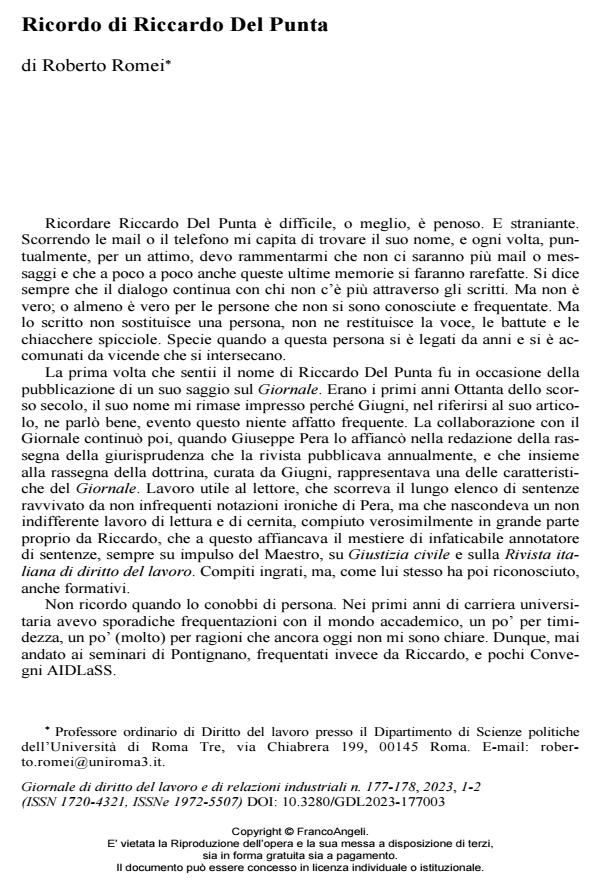Green transition and labour market policies
Journal title GIORNALE DI DIRITTO DEL LAVORO E DI RELAZIONI INDUSTRIALI
Author/s Roberto Romei
Publishing Year 2023 Issue 2023/177-178
Language Italian Pages 5 P. 23-27 File size 141 KB
DOI 10.3280/GDL2023-177003
DOI is like a bar code for intellectual property: to have more infomation
click here
Below, you can see the article first page
If you want to buy this article in PDF format, you can do it, following the instructions to buy download credits

FrancoAngeli is member of Publishers International Linking Association, Inc (PILA), a not-for-profit association which run the CrossRef service enabling links to and from online scholarly content.
The essay explores the link between green transition and labor market policies. The essay in-vestigates problems, methods, and solutions to mix worker-focused and social transformation-oriented approaches. The essay observes the evolution and consolidation of the European Law framework linked to the green transition in the context of the NextGenEU mechanism, the NRPP and regulations of social cohesion funds. On this basis, the essay focuses on models, actors, and programs of reform of active labour market policies, education and training sys-tems in Italy.
Keywords: Green Transition; Labour Market; Active Labour Market Policies; Education and training systems.
Roberto Romei, Ricordo di Riccardo Del Punta in "GIORNALE DI DIRITTO DEL LAVORO E DI RELAZIONI INDUSTRIALI " 177-178/2023, pp 23-27, DOI: 10.3280/GDL2023-177003